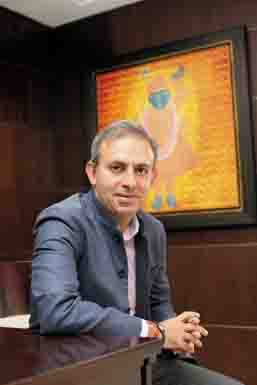Lots needs to be done to better customer's buying experience
Rajiv Bajaj, vice chairman and managing director, Bajaj Capital, talks about the milestones in his company, and trends in financial services space
What have been the key milestones for Bajaj Capital over the last 50 years?
The first and the most important milestone was the recognition of an important service gap in the society. Many people were looking for higher absolute returns than bank deposits, without taking unduly high risk. So, the innovation of company fixed deposits as an instrument happened. We raised the first fixed deposit (FD) scheme for East India Hotels, which was known as Associated Hotels of India back then. That was the first milestone in the emergence of Bajaj Capital and its acceptance by the investing community. Simultaneously, another important milestone was the creation of UTI, which is also celebrating its 50th year. The US64 launch gave us a piggyback ride on the growth and emergence of UTI as an alternative mode of savings to direct investment in the stock market. The third was in the mid-80s following the emergence of public sector companies and raising money from the markets through bonds. This helped us to take our message to a larger audience.
The fourth milestone was in the 90s, when private sector mutual funds came up with open-ended funds. Alliance AMC and Templeton Mutual Funds had come to India and we were partner - ing them. The year 2000 was an important milestone with the privatisation of the insurance sector. Before that we were being able to offer only wealth creation and preservation solutions to our inves - tors, but not risk management solutions. Insurance products helped us take a 360-degree view of the client’s needs and give them the best-in-class products.
Around 2000, we realised that what we were doing for decades was formally called financial planning. So we ap - proached the CFP (certified financial planning) Board of Standards in the US to find out if they wanted to set up opera - tions in India. We played the role of a cata - lyst and helped bring the CFP designation to India, promoted financial planning, and launched our own 360-degree financial assesment tool. That we believe was the defining milestone for the company because it helped us bring the science and art of building a holistic port - folio for the investor to meet their financial goals.
In the distribution space, how competitive is the market with the launch of the online platform?
We believe there are three types of investors in terms of their buying behaviour. One, who is entirely advicedriven—people who lack time and want to engage services of an expert to manage their money. The second universe is that of the DIY (do-it-yourself) investors, who want to empower themselves with more information. They go online and purchase what they want. Both constitute about 15 per cent each of the investor base. The remaining 70 per cent is partially advice driven—people who broadly know what they want; they do research, but want a second opinion. We at Bajaj Capital are the primary constituency for this set of investors. We use technology extensively and have even developed an indigenous wealth manage - ment tool. We look at the online platform as a service and delivery mechanism and believe that most of our clients are not expecting a complete online service experience. So, we are more of a combination of clicks and brick-and-mortar model. Our set of clients wants a face-to-face human intervention. Advice is a trust busi - ness and trust is usually built face-to-face.
How has been the Indian retail investor’s experi - ence after the recent landmark regulatory changes?
There has been a series of guidelines, both on the insurance and mutual fund fronts. This has made both products cheaper. But still lots needs to be done in terms of improving the buying experience of the consumer. The professional standard of the advisor in terms of the level of certification and how qualified he is in his role, and the education and awareness level of investor also needs an improvement. Today, to an extent, the trust between the customer and product provider is lacking and this is one of the biggest challenges of the industry. To rebuild that trust deficit, high-level communication has to be built.
Lots of investors are going online. How do you view this trend?
If you give investors a provision to buy directly, then industry players will be forced to raise their standards of service to be competitive. But we are missing a vey important angle. We are not telling the investors the importance of advice. The media, regulator and the industry bodies have to play this role. My fear is that for people who go online to buy and make purchases without advice there is a risk of misbuying. These people get so disillusioned that they leave the insurance or mutual fund industry altogether and are in the process of being exposed to a bigger risk. They become very dismissive about the whole thing. We have done a lot to curb mis-selling by equalization of fees and shifting to an annuitized model, but there is an equally big risk of mis-buying.
How do you view the fee-based advisory approach?
People are ready to pay fees provided they see value. As an advisor, I must ask whether I am being able to understand the customer’s needs and replay it back to him or her. Am I only giving you suggestions as a distributor, or am I actually helping to create your portfolio. And the third, how can I simplify the process of investment and make it paperless to a great extent. I think a combination of these three things will make investors see value and, then, to top it up, investors should have access to products which are different.









